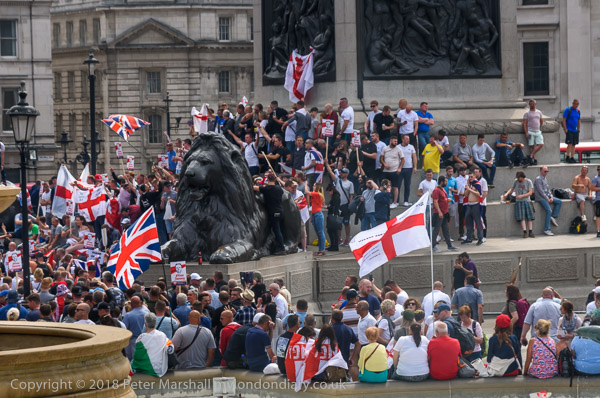Jack Sharp, (1928-1992), born in Bedfordshire became an engineer and moved in 1955 to take up a job at CERN , the European Organization for Nuclear Research which had been founded the previous year and is based in Geneva, Switzerland. CERN is now best known for investing the World Wide Web and as the home of the Large Hadron Collider, but this large scientific community also – at least then – had an amateur photographic club, which Sharp joined and which stimulated an interest in photography that lasted at least until 1970 when, for reasons unknown, he apparently stopped taking pictures.
In a self-portrait he looks a typical scientist of the time, with carefully brushed hair and bow tie, looking into the eyepiece of his tripod-mounted Asahi Pentax SLR camera, his other eye closed as he presses the short cable release. Sharp was obviously a man who took his photography very seriously – as you might expect from his scientific training – with details of each frame taken noted on index sheets.
Of course records such as this were common practice at the time, with photographic magazines and books publishing shutter speeds and aperture in the photo captions. There were special photographer’s Notebooks sold, and filing sheets to hold film negatives in binders often came together with paper sheets to record the details. Photography at this time was largely taught as a science rather than an expressive practice. At the end of Bill Brandt’s ‘Camera in London‘ (1948) is a section of technical data, listing his cameras, lenses and films and with a fold-out table listing each picture in the book with ‘Subject’, ‘Camera’, film speed, ‘Stop’, ‘Exposure’ (time), year and lighting conditions.
Even when I began to get pictures published you would often be asked for such details, though by the 1970s I think most of us simply looked at the picture and made them up. But when I started I carried little cards on which to record exposures even if I seldom used them.
I first read his story in a PetaPixel post, Man Inherits Treasure Trove of Unseen Street Photos From His Grandfather, which tells the story of how Sharp’s grandson, Dylan Scalet, a marketing professional who came to England 8 years ago to take a university photography course had time on his hands because of COVID-19 and started to look at and digitise some of his grandfather’s collection and found some truly interesting images.
You can see these images larger on the web site set up by Scalet, who is also publishing a new image each day on Instagram. Scalet estimates he has inherited over 5,000 of his grandfather’s images and has bought an Epson V850 flatbed to scan them. It isn’t a bad scanner for scanning film, though more suitable for larger formats than the 35mm used by Sharp. But I’ve made several books for friends scanned using this or a similar Epson model and used it to scan some of my own work.
Though much faster than a dedicated film scanner, using the Epson is considerably slower than photographing negatives using a macro lens and digital camera – and can’t match either the resolution or quality. But it is simpler and more or less foolproof and comes with reasonable software.
Sharp’s work – or what I’ve seen so far of it – is often interesting and certainly technically very competent as you would expect. It isn’t work that is going to change our view of the history of photography, fitting well into the general run of photography in the times that he worked and at least sometimes a delight to look at. But it does certainly bear out my often voiced opinion that the photography we know and admire is just the tip of a very large iceberg.

